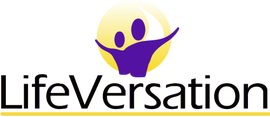CIVILITY IN THE OFFICE
Workshops and Training About Dealing With Others At Work And Abroad
Workshops and Training About Dealing With Others At Work And Abroad
TRAINING INFORMATION
What is Civility?
Civility is declaring and considering one’s own identity, needs, and beliefs without degrading someone else’s in the process.
Over the last few years, LifeVersation has discovered a need for cohesiveness in understanding the basic office language and style required for success of the team. Therefore, this training was designed to help bring about a better understanding of acceptable behaviors for the workplace.
CIVILITY IN THE OFFICE is more than learning how to be courtesy to people who are rude but also about being able to disagree without disrespecting them. This series of sessions teach participants how to look for common ground to build healthy dialogue spoken and unspoken.
OBJECTIVES
At this program’s conclusion, participants should be able to:
What is Civility?
Civility is declaring and considering one’s own identity, needs, and beliefs without degrading someone else’s in the process.
Over the last few years, LifeVersation has discovered a need for cohesiveness in understanding the basic office language and style required for success of the team. Therefore, this training was designed to help bring about a better understanding of acceptable behaviors for the workplace.
CIVILITY IN THE OFFICE is more than learning how to be courtesy to people who are rude but also about being able to disagree without disrespecting them. This series of sessions teach participants how to look for common ground to build healthy dialogue spoken and unspoken.
OBJECTIVES
At this program’s conclusion, participants should be able to:
- Define appropriate and inappropriate office behavior
- Describe appropriate office dress
- Demonstrate professionalism with telecommunication
- List steps for dealing with difficult people
- Identify and rephrase blunt wording for more professional communication
- Understand and demonstrate the use of to-do lists and the ABC prioritization technique
- Explain methods for handling typical office interruptions
- Outline tactics for overcoming procrastination
- Develop action plans to improve professionalism and productivity in work areas
WORKSHOPS
(All workshops run 2-4 hours each and is recommended to do each in separated settings)
(All workshops run 2-4 hours each and is recommended to do each in separated settings)
Professionalism – Behavior That Represents The Job
Communication – Saying What Needs To Be Said The Right Way
Time Management – Prioritizing and Scheduling
Image – Looking and Acting Professionally
Upon completion of the training program, participants should have a clear understanding of workplace etiquette and civility, best practices for communicating with others, basic time management, and how to look appropriate on the job.
- This session identifies the most common social behaviors that produce negative expression in the work areas and provides the tools to master them.
- Participants will explore the effects of different behaviors and learn ways to present professionalism in some of the most awkward settings.
- This session exposes participants to explore their personal values that interact with their behaviors in the office.
- Participants will experience career mapping, operating within strengths, executing motion towards short-term goals, and behavioral influences that deliver success.
Communication – Saying What Needs To Be Said The Right Way
- This session addresses verbal and non-verbal language that sticks to the objectives to get the job done.
- Participants will learn how to be an excellent communicator of professionalism and position themselves for success every time.
Time Management – Prioritizing and Scheduling
- This session address the complexity of completing tasks and management of time.
- Participants will learn the practical tips for getting “the right things” done in a reasonable amount of time including prioritizing multiple tasks, managing the demands of deadlines, and setting achievable goals.
Image – Looking and Acting Professionally
- This session addresses the confidence that should be displayed from posture, style, and demeanor.
- Participants will learn about personal branding and workplace appearance in order to look like the future desired.
Upon completion of the training program, participants should have a clear understanding of workplace etiquette and civility, best practices for communicating with others, basic time management, and how to look appropriate on the job.

